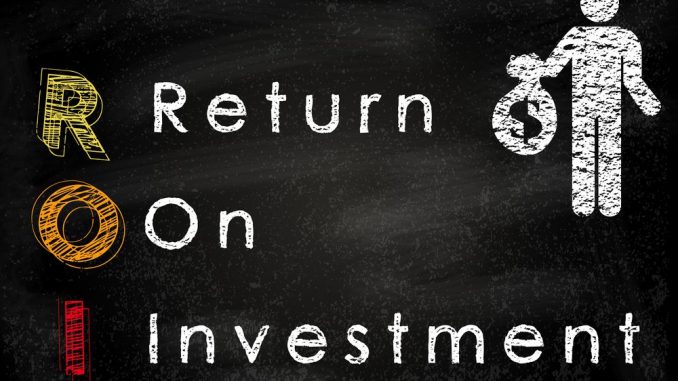
I’m going to provide you an exhaustive, detailed content on F&O trading. With so many individuals, trading firms and organizations investing in F&O today, it’s become necessary to have an effective knowledge before you lock money in it.
At present, the daily turnover in the Equity Cash segment of National Stock Exchange (NSE) is around $3 billion where as the daily turnover in the derivatives segment is around $30 Billion. In simple words, trading in equity in derivative market (F&O) is 10 times greater than trading in spot market (underlying stocks).
So such a large amount of population trading in F&O, which made it something that you should consider doing, at least once.
No doubt, futures can create a great wealth in short span with small amount of cash but on other side it’s riskier than any other securities. One party in future contract loses, other wins.
However, in option trading (long position), you can limit your losses to some extent with no limitations on gains. SO options can be a great start if you’re a newbie in F&O.
With no further ado, lets dive in.
A futures contract is a legal agreement, generally made on the trading floor of a futures exchange, to buy or sell a particular commodity or financial instrument at a predetermined price at a specified time in the future. Futures contracts are standardized to facilitate trading on a futures exchange and, depending on the underlying asset being traded, detail the quality and quantity of the commodity.
An options contract is a contract that allows the holder to buy or sell an underlying security at a given price, known as the strike price. The two most common types of options contracts are put and call options, which give the holder-buyer the right to sell or buy respectively, the underlying at the strike if the price of the underlying crosses the strike.
That’s how investopedia define it.
But may be it’s going upon your head, huh?
Okay, lets make it easy.
F&O are known as derivative instrument.
The terms “derivative” is used to denote financial instruments which derive their value from some underlying assets. In stock market, that underlying assets are stocks which are traded in spot market (stock exchanges).
Generally, example of farmers are stated widely by many pundits when introducing F&O. In fact, it’s the real originator of derivative securities.
The first future contracts can be traced to the Yodoya rice market in Osaka, Japan around 1650. The farmer afraid of falling price of rice in future before harvesting. So to protect them self from falling price, farmers entered into a contract with the buyers to sell the rice at predetermined price, irrespective of the market price. Here underlying asset is rice.
So in this example of farmers, only physical settlement takes place i.e. farmer will exchange rice in for money but in stock market, cash settlement take place i.e. instead of transferring underlying stock, just the difference is paid in cash.
Come on, don’t read it again and again, I’ll highlight it later after a example. Then it’ll be easy for you to understand.
FUTURES
Imagine yourself as a farmer.
Img – wikimedia
You worked hard to grow paddy (rice) but you’re some how highly pessimist regarding the future price of rice. And by luck, I (buyer) was optimist towards the future price of rice.
(Lets assume currently the price of rice 10 Rupees per kg)
SO we 2 made a contract, I’ll buy the rice from you for 9 per kg exactly after 3 months. Kaboom. Paper signed. Agreement executed legally.
What made us to make this contract?
As I was optimistic towards the price, I agreed at lower than current price. More will be the low price, more will be my profit. And as you was highly pessimist so agreed at bit lower price.
So that’s what known as Future Contract of rice.
How will we gain/loss?
If the current price after 3 month is 8 Inr then I’ll push the contract. In short, I earned 1 Rupee per kg rice.
And if the price of rice after 3 months is 10 Inr then you’ll push the contract. In short, you’ll earn 1 rupee per kg rice.
That’s how one earns and loses in future market.
In case of rice, physical settlement take place. You’ll not give me 1 rupee if it’s in my favor instead you’ll sell rice for 9 whereas if it had to be settled in cash then you had only paid me 1 rupee. That’s why it quite complex in equity derivative.
This is where I was confused from a long time. Futures are not settled physically.
Here’s the quick overview:
Suppose you bought a future contract of ITC at 246 expired on July 28 (decimal ignored).
Now suppose if the price of ITC on 28 July reached 250. But as you had a future contract of 246 so you can buy that stock at 246. Of course! on 28th of July, even if the current price is 250.
That’s a benefit of 4 Rs per share. SO to make the process easy, cash settlement was introduced. Instead of buying buying stock at 246 (as per contract) and then selling it for 250 in current market, instead why don’t you take the difference directly in your pocket?
That’s what know as cash settlement. If you transferred shares, then it would be physical settlement. By the way, exchange don’t allow physical settlement.
And also you will incur loss if the share price gone below 246. Apply it vise versa.
But wait! There’s another aspect also.
When you buy securities, it means you’re going long. And in case of selling, shorting.
SO instead of buying, you can also sell the future contracts. In fact their is always 2 parties (standing opposite to each other) whenever a contract is formed. That’s why one loss and one gains.
Selling future contracts depicts that one will sell the stock at pre-determined price on any certain future date.
Again the same example.
Suppose I sold the futures of ITC at 246. It depicts that I would sell the stock at this price in future. So if the price is 240 on any predetermined date in future, I’ll lose 6 per share as I’ve to sell the stock for 246 (even if the current price is 246) as I was legally bound.
Let’s sum it up:
Bought future contract.
- Profit, if Spot price > Future price
- Loss, if Spot price < Future price
Sold future contract.
- Profit, if Spot price < Future price
- Loss, if Spot price > Future price
As the contract is settled on certain future date, so their’s no requirement of any cash at the time of contract. However, to safe guard the counter party, a margin, typically 10th of whole amount is deposited at the time of contract. Margin maintenance is also required on daily price fluctuations.
In spot market, Cash and carry system is used. Pay and get the stock.
Futures contract are available in lots. And that single lot contains thousands of shares (as prescribed by NSE).
For instance, You can see the lot size of Cairn India at the bottom of the image.
This means that investor has to make a contract of exact amount of shares in the lot. No less. For more, buy another lot of 3500 shares.
This move was introduced by SEBI to discourage small investors practicing futures as they are riskier. However, even if it’s risky, there is a way to earn around 10% to 15% risk free return from futures. It’s simple and risk free but need great effort.
Phew…..! enough of Futures, now lets talk about Options.
OPTIONS
For a newbie, I would always recommend Options. It limits the losses on every trade to the extent of premium paid. And the good news is, your profit , in theory, is unlimited.
SO here’s how option works.
Unlike futures, their are 2 types of options.
- Call Option
- Put Option
And again these 2 types are further categorized as:
- Buy
- Sell
So in total, we have four types of Options:
- Buy call option
- Sell call option
- Buy put option
- Sell put option
Before diving in deep, lets first understand the basics of Options.
Options is a right, but not the obligation, to buy/sell specific asset for a pre-determined price on or before the certain future date.
Here’s a example:
Suppose you and your wife found a house (worth 50 lakhs) that you both loved to live in. And decided to buy it but due to lack of cash you’re not able to buy the house.

SO now what?
Here’s the solution – You paid a premium, say 50,000, to the owner of house and signed a contract that he will not sell the house to anyone for one year. And you’ve right to buy it on and before the last date of one year.
Simple, huh! Okay, now lets make it sexy.
Suppose media discovered that the house, you’re going purchase, was the place where Narendra Modi spent his childhood. Just after the news, the price of the house went up by double i.e. 100 lakhs.
The question is – Weather the real owner of the house is entitle to sell the house to anybody for 100 lakhs or not?
Of course, not. You 2 made a contract that he’ll will not sell the house to anyone till the year ends. So what will you do to get profit.
Would you care to still buy the house for 50 lakhs?
Of course, you can buy a house at half rate (as per the contract) and sell it at double. In this case, flat 50 lakhs profit. However, you’ll lose 50,000 amount of premium.
But if the neighborhood discovered that the house was haunted by the ghost of Sir Edward VI, the basement full of rats and wall cramped from inside……. which drove the price of house to 25 lakhs.
Now, what?
Are you still bound to buy that house at 50 lakhs.
Of course, not. Unlike futures, you’re safe from additional loss. Your loss is limited to the extent of premium you paid. Just don’t execute the contract for 1 year, it’ll get expired. No loss (except the premium amount) and you’re also not entitle to buy it.
That’s why it was your right (on your own discrete) to buy or sell. It’s all on you, weather you execute it or not.
You’re buying a call option and he is selling the call option.
Buyer has limited loss and unlimited profit. Seller has limited profit and unlimited loss.
But the scenario is vise versa in put option. Buyer of put option has the right to sell (not ‘buy’ like call option) the securities at pre-determined price on or before future date. Buyer pays the premium.
Buyer of put option have limited loss and seller has limited profit.
An illustration of option of Cairn India:

Options are also categorized as European and American. In India, only European options are exercised.
American Options are can be exercised on or before the expiry date.
European Option are only exercised on expiry date.
Lets sum it up.
Buy call option
- Profit, if spot price > (future price + premium)
- Loss, if spot price < (.…..’’……)
Sell call option
- Profit, if spot price < (……’’……)
- Loss, if spot price > (……’’…….)
Buy put option
- Profit, if spot price < (……”……)
- Loss, if spot price > (……’’……)
Sell put option
- Profit, if spot price > (…..’’……)
- Loss, if spot price < (……’’……)
May be that’s enough. Have queries? Shoot a comment.